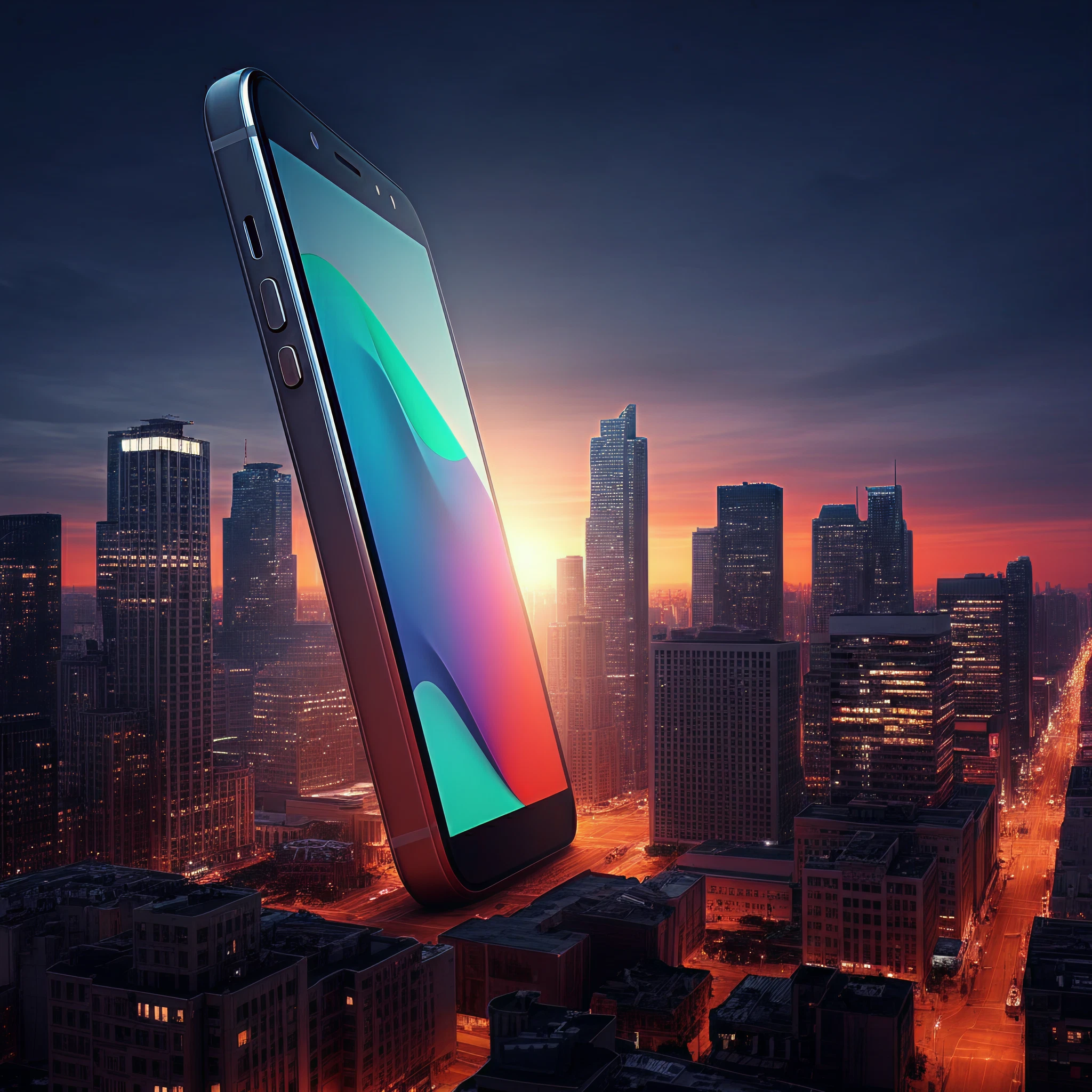Modern smartphones come in all shapes and sizes, which begs the question for many users, “How big is a phone?” Whether you’re a tech enthusiast, a mobile user, or simply someone curious about phone dimensions, this guide dives deep into the evolving world of smartphone sizes.
The Evolution of Phone Sizes
When we think about the progression of mobile phones, a clear trend emerges. Early models were compact and designed to fit into the tightest pockets. Fast-forward to today, and smartphones have grown larger to accommodate increasing functionality and improved user experience.
- Early 2000s: Compact, button-heavy phones like the Nokia 3310 measured around 4.5 inches tall overall with tiny screens under 3 inches.
- 2010s: The introduction of smartphones like the iPhone revolutionized the industry, with 3.5 to 4-inch screens becoming the norm.
- Today: Most standard smartphones range between 6 and 6.7 inches in screen size, with foldable phones offering expanded screens exceeding 7 inches when unfolded.
Screen Size vs. Overall Phone Size
While we often discuss the size of phones based on their display screen dimensions, this doesn’t always correlate to the phone’s physical size. Screen size is measured diagonally, while the overall size includes bezels, thickness, and weight.
For example, a 6.1-inch screen phone like the Google Pixel 6A may seem smaller in height compared to other large-screen phones because of slimmer bezels.
Key points to consider regarding size and usability:
- Larger screen sizes (6.5 inches and above) are great for watching videos, gaming, or productivity tasks but may feel bulky.
- Compact phones (5.4-6.1 inches) are lightweight, pocket-friendly, and easier to use one-handed.
The Impact of Phone Size on Usability and Portability
The size of a phone greatly impacts your day-to-day experience. Here’s how:
- Usability:
- Smaller phones can typically be operated with one hand, making them ideal for users on the go.
- Larger devices often require two hands but excel in productivity and multitasking.
- Portability:
- Compact phones easily fit in pockets and small bags, while larger devices may need extra space or specific cases to protect them.
How Phone Size Affects Battery Life and Performance
Bigger phones often come with larger batteries, offering more usage time. A larger phone can also house more powerful processors and advanced cooling systems, ensuring smoother performance even when multitasking or playing graphics-heavy games.
Battery examples:
- Smaller phones like the iPhone Mini (5.4 inches) have less room for large battery capacity and may last a day with moderate usage.
- Bigger devices like the Samsung S22 Ultra (6.8 inches) often boast batteries that can last over 24 hours.
Trends in Phone Sizes
Today, manufacturers are experimenting with:
- Foldable Phones: Devices like the Samsung Galaxy Z Fold provide the convenience of compact size with the functionality of a larger screen.
- Slim Bezels and Punch-Hole Displays: These innovations allow for larger screen sizes while keeping the phone’s overall dimensions manageable.
How to Choose the Right Phone Size for Your Needs
Finding the right-sized phone comes down to personal preference and your daily needs. Here’s a quick guide to help:
- Compact Phones (<6.1 inches):
- Best for users who prioritize portability.
- Ideal for one-handed operation.
- Good fit for those who prefer minimalist designs.
- Standard Smartphones (6.1-6.5 inches):
- Balanced size for a mix of usability and functionality.
- Suitable for average media consumption and light productivity.
- Phablets or Large Phones (>6.5 inches):
- Perfect for intense media consumption, gaming, or multitasking.
- Offers larger keyboards for typing ease.
Comparing Different Phone Sizes
Below is a quick comparison of phones by size categories:
| Category | Examples | Screen Size | Pros | Cons |
|---|---|---|---|---|
| Compact Phones | iPhone 13 Mini, Asus Zenfone | 5.4-6.1 inches | Easy portability, one-handed use | Smaller battery, less screen space |
| Standard Phones | Google Pixel 6A, iPhone 13 | 6.1-6.5 inches | Balanced usability and functionality | Limited multitasking space |
| Phablets/Large Phones | Samsung S22 Ultra, iPhone 14 Pro Max | 6.5-7 inches | Great for productivity and gaming | Bulky, not pocket-friendly |
Visualizing Phone Dimensions
Infographic idea 1:
Visual representation comparing the physical dimensions of various models, showcasing differences in height, width, and bezels.
Infographic idea 2:
A comparison showing screen dimensions versus physical dimensions (compact, standard, phablet).
Lifestyle image idea:
Showcase devices in everyday scenarios, such as fitting into a jeans pocket for compact models, or being used with two hands for phablets.
The Final Verdict
Phone sizes have come a long way, adapting to our growing need for better functionality, larger displays, and improved performance. Whether you prefer compact devices for convenience or larger phones for advanced usability, understanding the impact of size on your experience is crucial.
Still unsure about which size is right for you? Check out a store and physically explore various models, or consult device specifications for measurements to find your perfect fit.
What’s next for phone sizes?
With foldables and expanding screens on the rise, it’s clear that the evolution of phone dimensions is far from over.
Want more tech insights like this? Stay tuned for updates and comparisons on the latest smartphones.








